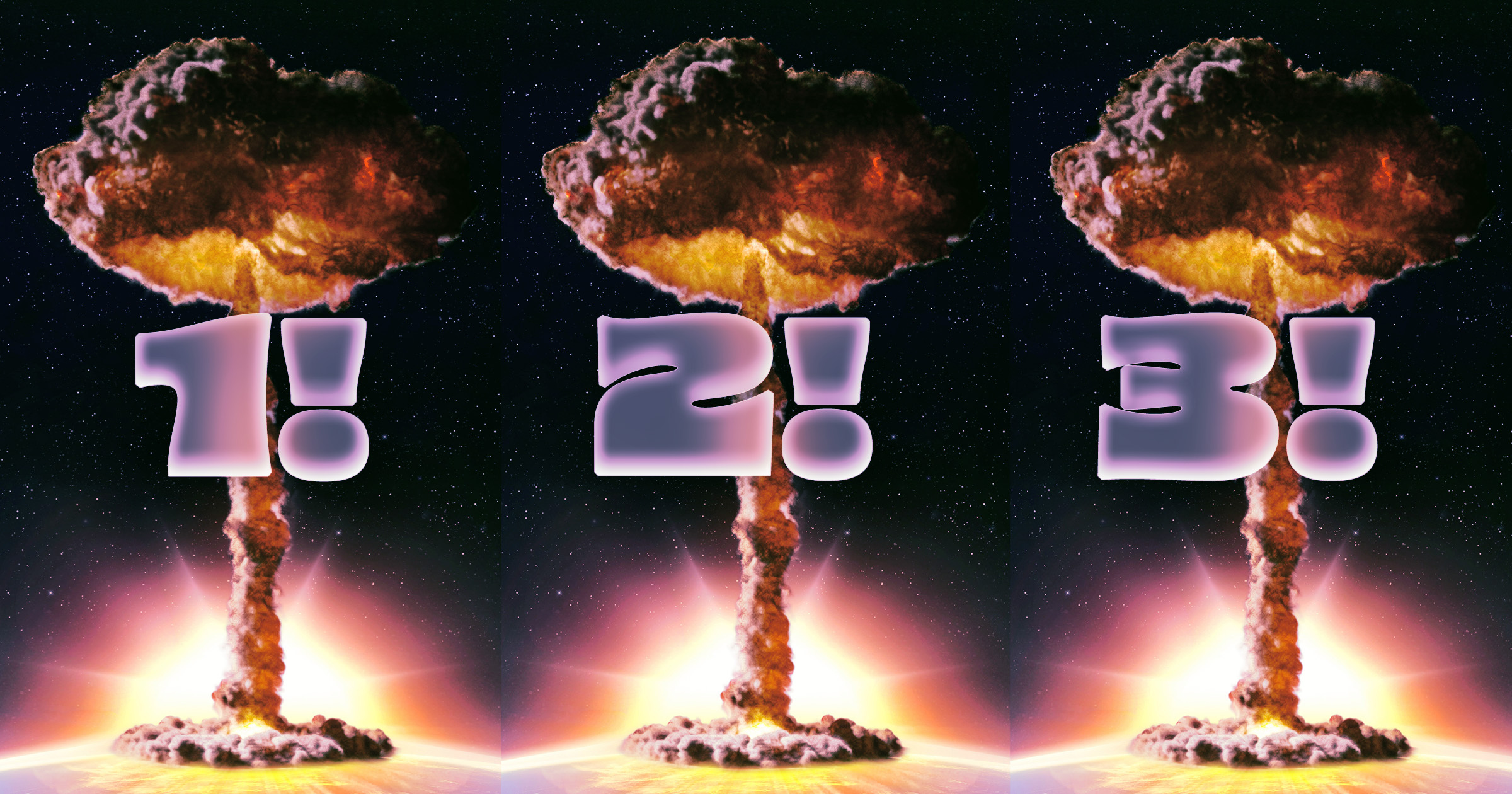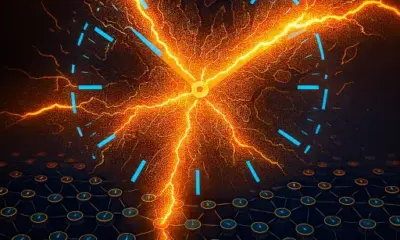Science
Chinese Military Simulates Damage from Rapid-Fire Nuclear Strikes

The Chinese military has conducted a laboratory experiment to analyze the potential damage from firing three nuclear missiles in rapid succession at the same target. Reported by the South China Morning Post, the findings were published earlier this month in the scientific journal Explosion and Shock Waves. This research aims to provide insights into the destructive capabilities of multiple nuclear detonations compared to a single strike.
In their experiment, Chinese scientists utilized a large metallic vacuum chamber, designed with robust walls yet compact enough for a laboratory setting. Inside, they simulated a series of consecutive nuclear explosions by using pressurized gas to burst three glass spheres buried in quartz sand. This approach allowed them to capture detailed footage of the explosive events.
The results indicate that multiple strikes significantly increase the size of the resulting crater and the extent of destruction. Specifically, the study found that a sequence of rapid-fire strikes created a crater with a radius of 374 feet and a depth of 115 feet. This is a noticeable improvement over the 1965 Palanquin Test conducted in Nevada, which resulted in a crater measuring 119 feet in radius and 69 feet deep. The new data suggests that multi-point explosions enhance the damage radius and overall impact area, emphasizing the challenges for future nuclear bunker design.
The context of this research reflects ongoing concerns regarding nuclear capabilities, particularly as the military assesses advancements in weaponry from countries like the United States and Russia. The study specifically highlighted the development of “new generation of low-yield earth-penetrating nuclear missile warheads” as a significant factor influencing military strategy and defense preparations.
The implications of this research extend beyond theoretical damage assessments. As geopolitical tensions rise, particularly between China and the United States, understanding the potential effects of nuclear weaponry becomes increasingly critical. The findings may inform future developments in military infrastructure, particularly in creating more resilient bunkers to withstand possible nuclear scenarios.
In conclusion, the Chinese military’s laboratory findings underscore the devastating consequences of rapid-fire nuclear strikes. This research not only serves to quantify the effects of such attacks but also raises important considerations for defense strategies in a world where nuclear arsenals remain a focal point of international security.
-

 Technology5 months ago
Technology5 months agoDiscover the Top 10 Calorie Counting Apps of 2025
-

 Health3 months ago
Health3 months agoBella Hadid Shares Health Update After Treatment for Lyme Disease
-

 Health3 months ago
Health3 months agoErin Bates Shares Recovery Update Following Sepsis Complications
-

 Technology4 months ago
Technology4 months agoDiscover How to Reverse Image Search Using ChatGPT Effortlessly
-

 Technology1 month ago
Technology1 month agoDiscover 2025’s Top GPUs for Exceptional 4K Gaming Performance
-

 Technology3 months ago
Technology3 months agoElectric Moto Influencer Surronster Arrested in Tijuana
-

 Technology5 months ago
Technology5 months agoMeta Initiates $60B AI Data Center Expansion, Starting in Ohio
-

 Technology5 months ago
Technology5 months agoRecovering a Suspended TikTok Account: A Step-by-Step Guide
-

 Health5 months ago
Health5 months agoTested: Rab Firewall Mountain Jacket Survives Harsh Conditions
-

 Lifestyle5 months ago
Lifestyle5 months agoBelton Family Reunites After Daughter Survives Hill Country Floods
-

 Health3 months ago
Health3 months agoAnalysts Project Stronger Growth for Apple’s iPhone 17 Lineup
-

 Technology4 months ago
Technology4 months agoHarmonic Launches AI Chatbot App to Transform Mathematical Reasoning





















